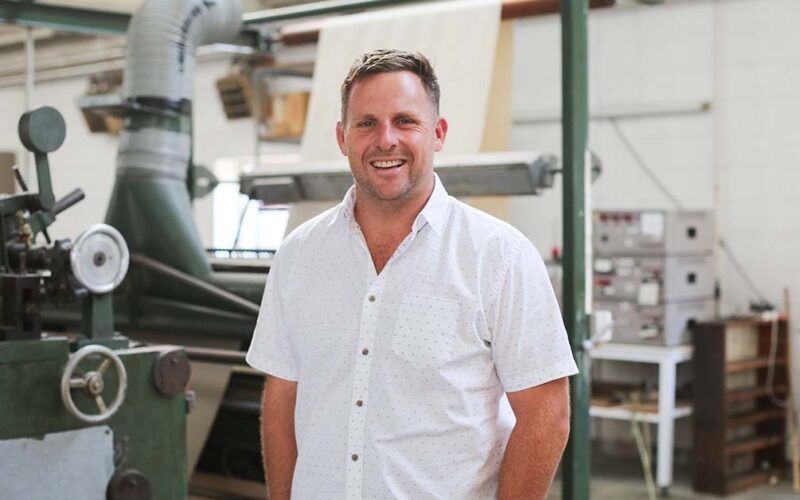A new project has identified securing water as the main barrier stopping Waikato pastoral farmers diversifying to enterprises such as horticulture.
Switching to horticultural crops from drystock or dairying required a consistent water supply throughout the year, which cannot be guaranteed with the region’s increasingly dry summers, the AgFirst study found.
Getting the necessary water also meant acquiring a resource consent or taking an economic risk and drilling for bore water, with no guarantees of success.
The six-month study was completed last year, with the help of funding from the National Science Challenge Our Land and Water NZIPIM fund. It also had support from AgResearch.
AgFirst consultant and Waikato drystock farmer Phil Weir outlined its findings when the consultancy company released its Waikato-Bay of Plenty financial survey in early August.
The study took 12 family-owned farming businesses that were looking to undertake due diligence around a land-use change /diversification.
AgFirst, as a part of the project, facilitated and supported these businesses in the due diligence process through workshops.
These businesses wanted to diversify for financial and environmental reasons, while others saw it as a succession tool. Weir says they were looking at everything.
“We had people looking at dairy sheep, vegetable production, maize, kiwifruit, blueberries, other horticulture, dairy goats, tourism and a range of other activities,” Weir said.
The project followed on from a 2019 Waikato Regional Council-funded study, which looked at the economics and risks of land-use change in the region.
The interest and pressure on farmers to diversify will grow as environmental regulations tightened. The Climate Change Commission’s report also anticipated there will be at least 3000ha of land-use diversification per year, which was double the current rate.
While many conversion options, including sheep or goat milking and horticulture, had a lower methane output, none were silver bullets financially.
“All required some form of capital and most required significant capital upfront,” he said.
In addition to capital, farmers also found that the time commitment required to carry out a due diligence exercise was often onerous while running the existing business as well. While the issues of time and money were disadvantages, the biggest barriers in stopping diversification was the lack of information and resource limitations, most notably water for irrigation.
It was generally the first thing that tipped most people up.
“For the most part, people were saying that we went through a process and found that water was too difficult,” he said.
“They want to have a crack – but in doing so it becomes hard.”
The fact that it was wet in Waikato and farmers might be able to store water or use waterways that went through their properties did not mean they could create or access those water sources at the scale required to enable land-use change.
Nor was the existing water usage used on a typical dairy farm adequate for a horticulture operation, particularly when it required constant irrigation in summer.
It would also be outside the farm’s existing consent conditions, meaning a new consent was required.
What was left was the costly exercise of having to drill for water.
“It’s a $120,000 roll of the dice to see if you’ve got water because it’s very binary if you’re going to proceed with any horticulture based on whether you roll water or you don’t roll water,” he said.
“For a ma and pa who are trying to do that as part of their operation, if they had to dig two or three bores, that’s a $200,000-$300,000 undertaking.
“If you’re not corporate agriculture and you’re like me, a 37-year-old buying into a farm, taking the punt on water tests your nerves, both because it is uncertain if you will hit water, but also because getting certainty on the approval path is not always clear.”
Faced with that burgeoning cost, he says potential diversifiers then naturally question if they want to do it.
There are not enough environmental incentives for diversification for people looking at horticulture or alternative milking.
Weir says that should not just be pine conversions and stronger financial incentives were needed to help farmers thinking of diversifying into higher-value activities. Critical to solving that issue will be where carbon pricing lands, which could be known later this year.
As unpalatable as it is to farmers, those incentives may have to be in the form of a subsidy to assist early adopters and enable more over-the-fence learning. He saw a greater role for the Government in helping with those incentives, as well as industry groups such as Irrigation New Zealand.
“Otherwise, it’s going to remain in the domain of the agri corporates or the larger-scale farming operations and you’ll see continued aggregation of farming assets and family farms will come under more threat,” he said.
Apart from Canterbury, where much of that region’s pastoral and arable farming was under irrigation, he expected water to be a similar barrier in other regions around the country.
The project will be outlined in NZIPIM’s September journal.










